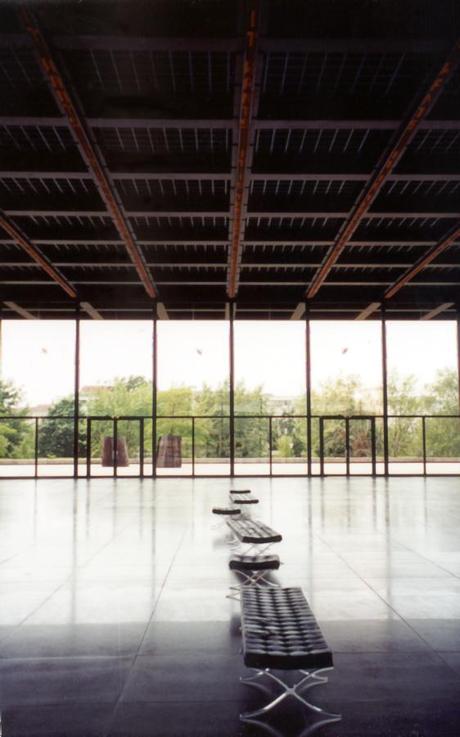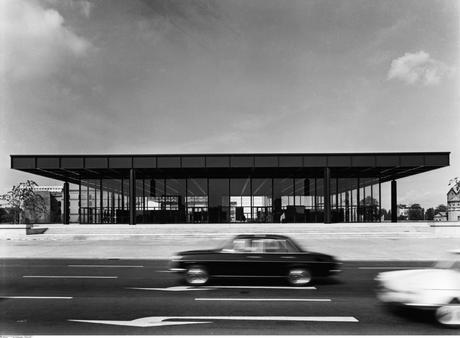Julie Rafalski
A Building in Berlin
Several years ago, while in Berlin, I went to the Neue Nationalgalerie, designed by Mies van der Rohe. When you enter this vast glass and steel box, the other side of the building looms in the distance. There are no supporting beams on the inside, creating an open space and the impression that the roof is just hovering above you. The ceiling inside exposes the roof's dark- coloured steel box beams and has an oppressive character of a warehouse space.

When I visited, this space was largely empty except for some folded tables and partitions in one area. The gallery spaces are on the lower level. Entering this lower level, there are no windows immediately visible and one has the sense of descending into an underground space. A windowless cafe on this lower floor has the feel of a train station cafe, lending it an undertone of expectation. Yet there are no passengers hurrying through, nor sounds of trains engines or announcements.
In one book, about Mies, Claire Zimmerman writes that the building is a "space constructed for the display of itself". It seems almost like a monolithic sculpture made of glass and steel. It welcomes cool rational thought and order and if you were to laugh too much, suddenly start being nostalgic, or shed a tear, this building would not be very sympathetic. It would probably chide you for displaying unnecessary emotion.


